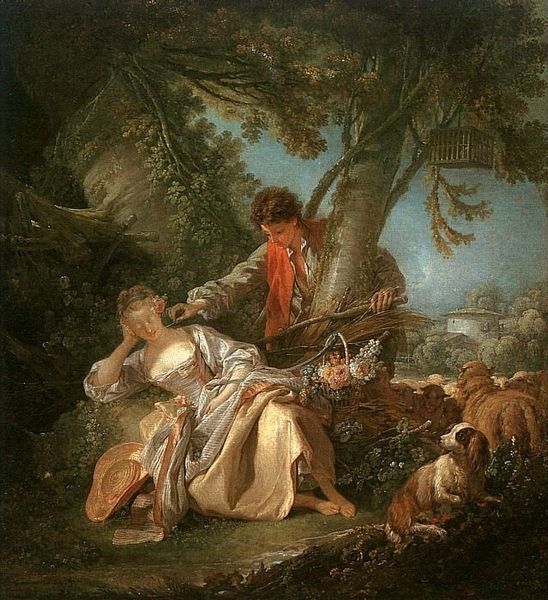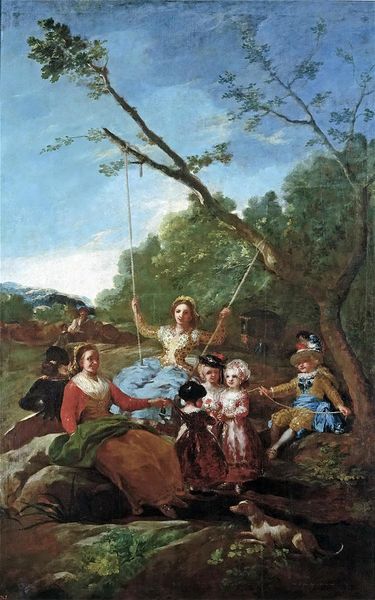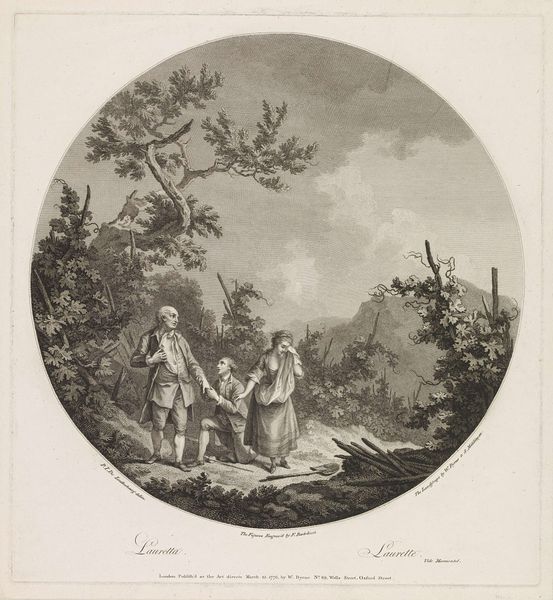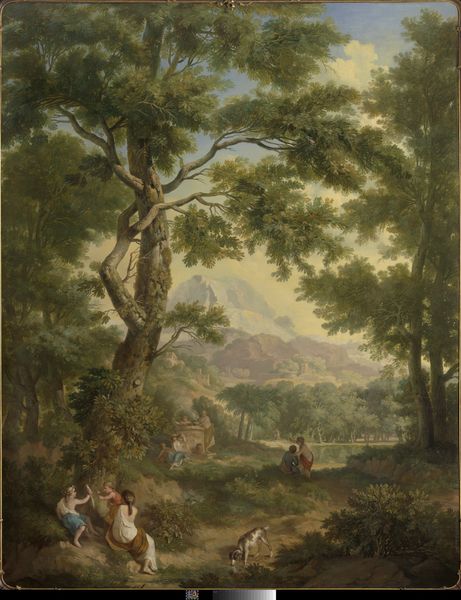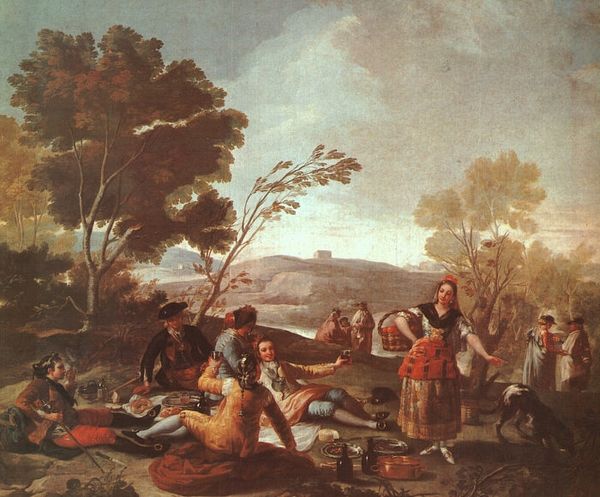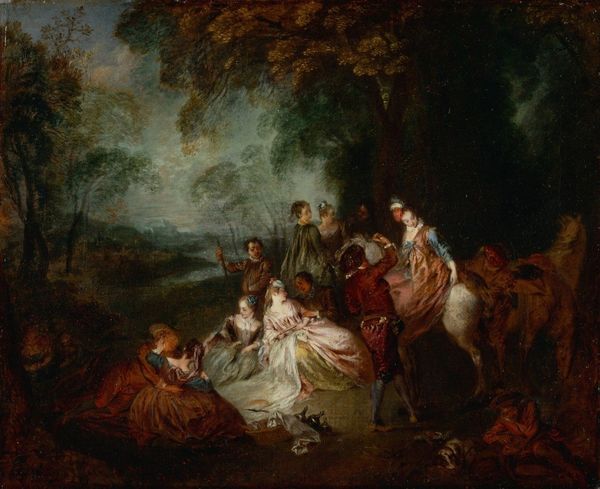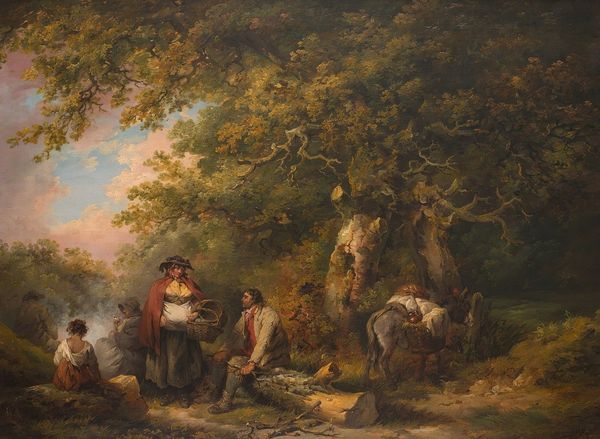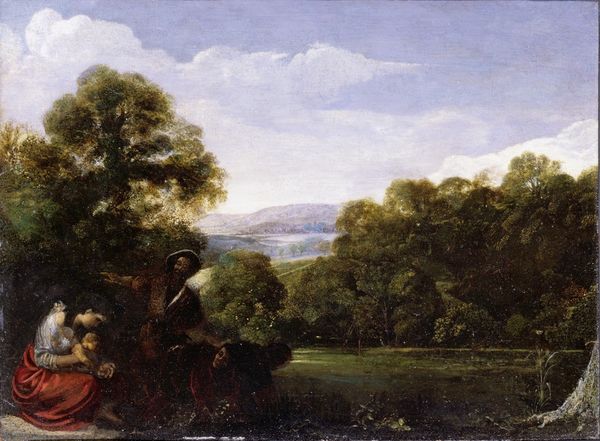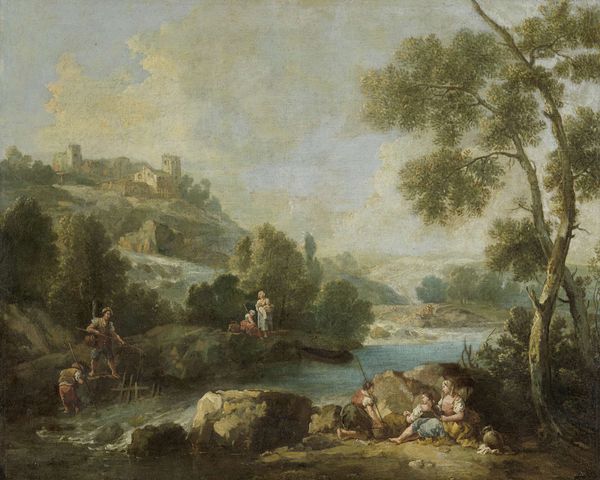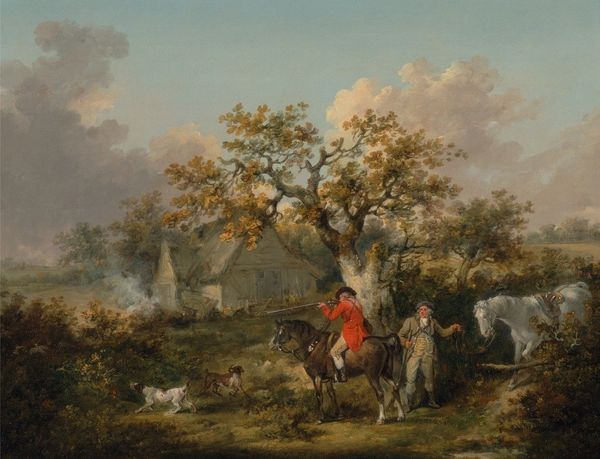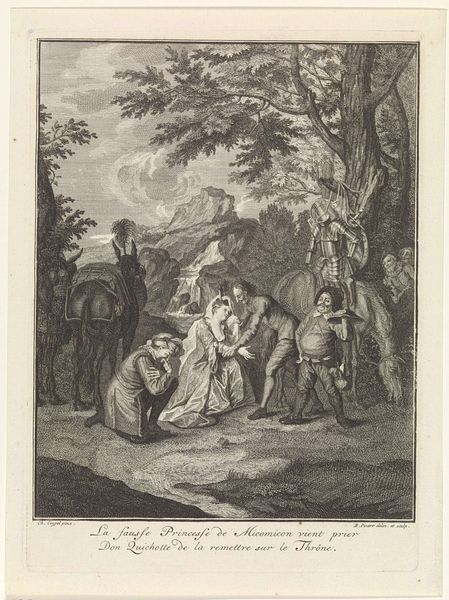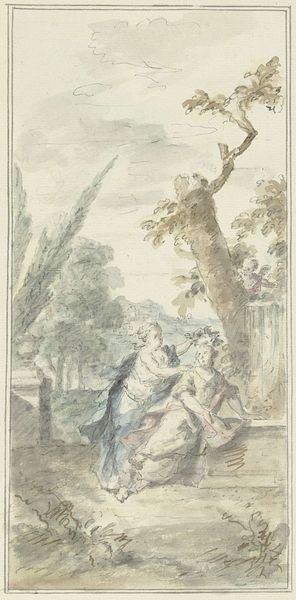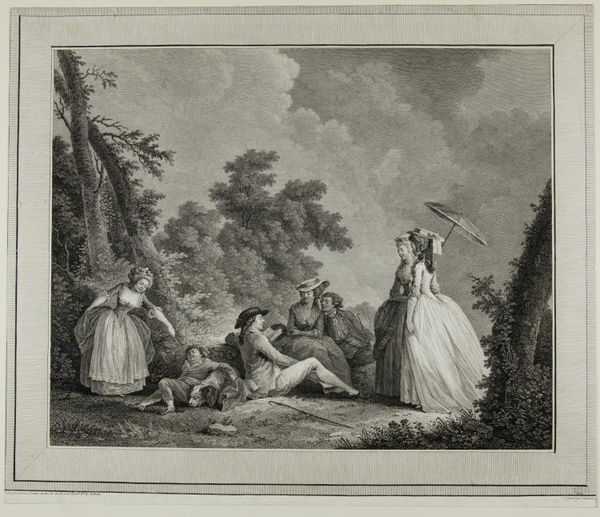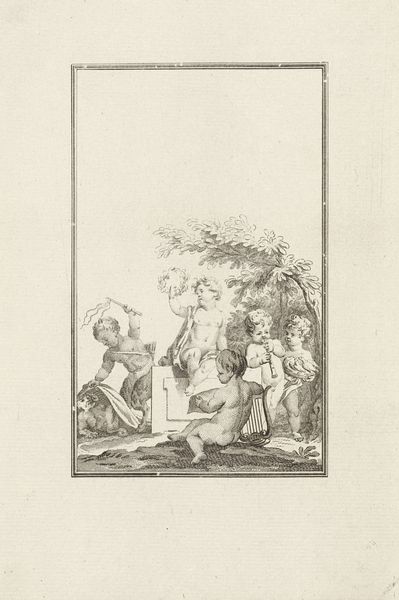
Dimensions: 41 x 26 cm
Copyright: Public domain
Editor: This is "The Picnic" from 1788, an oil painting by Francisco de Goya currently held at the National Gallery in London. At first glance, the painting feels unbalanced; the group on the blanket contrasts with the expanse of the landscape above. How would you interpret Goya’s use of space and form here? Curator: From a purely formal perspective, consider how the composition is divided. The lower third is densely populated with figures, meticulously rendered in varied hues, whereas the upper two-thirds consist of an atmospheric landscape painted in looser strokes and more muted tonalities. It’s almost as if there are two paintings occurring simultaneously. What do you make of the color palette at play here? Editor: I notice that the figures' clothing utilizes a more vibrant palette with stronger saturation and local color than the greens, greys, and blues used in the upper section of the canvas, which has significantly less color contrast. It does draw my eye down to the people, suggesting a psychological and visual contrast between the group and their environment. Does that division play any role, or is that just accidental? Curator: Perhaps "accidental" is not quite the mot juste. Goya was a highly deliberate painter. The visual tension—between detailed figuration and broad, evocative landscape painting, for example—creates a dynamic that charges the composition. The eye is drawn to the interplay of these contrasts; one almost wants to see if the figures belong there or were just superimposed onto it. Consider how the texture of the brushwork further distinguishes the landscape from the figuration as well. Editor: I see that now. The rougher texture of the brushstrokes makes the foliage seem almost… animated, contrasting with the smooth finish of the figures. I hadn't really thought about how the execution of the paint contributes to the painting's structure. It all seems much more deliberate now. Thank you. Curator: Indeed. And notice, too, that Goya refrains from resolving these tensions in a neat narrative closure; there is something resistant, elusive in his visual language. These internal relationships contribute greatly to our viewing experience.
Comments
No comments
Be the first to comment and join the conversation on the ultimate creative platform.
